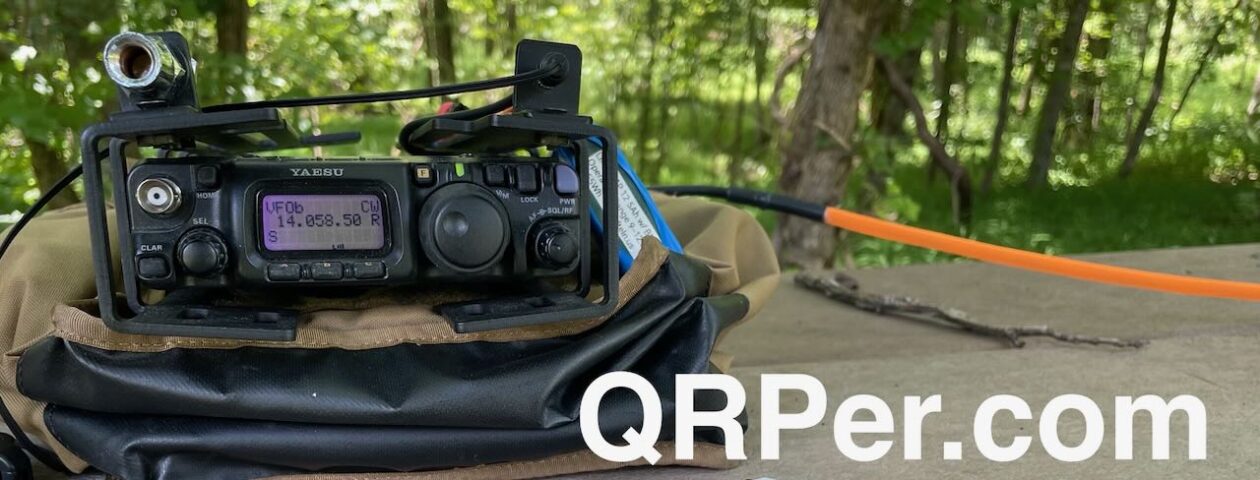Many thanks to Conrad (N2YCH), who shares the following field report:
Testing a new Buddistick Pro at the Silver Sands State Park “Antenna Test Range.”
by Conrad (N2YCH)
Silver Sands State Park in Connecticut borders the Northern shoreline of Long Island Sound and is located in Milford, a town on the Western side of New Haven County. There is a field between the parking lot and the sound that is a perfect “parks on the air” activation location. There are no power lines nearby. It’s very flat with no trees, so there is nothing to block the signal. It’s very easy to access and has a spectacular view.

Local hams visit to do POTA frequently, and we often run into each other there. One of those hams likes to build and test antennas and dubbed the park the unofficial “antenna testing grounds.” I’ve also used the park to test a number of different antennas myself, and today’s post details the maiden voyage of a brand new Buddipole Buddistick Pro antenna that I received as a holiday gift.
After using a Buddipole vertical as my primary antenna for years for POTA activations, I was interested to see if the Buddistick Pro measured up. What makes the Buddistick desirable is how compact it is. It breaks down and fits into the zippered case it comes with, but when put together, stands tall.


There are many videos and reviews of this antenna online, so I don’t want to re-hash what’s already been reviewed many times before. However, I did want to share how this worked for me.
Setting this up was a breeze; it took just a few minutes. I did bring along my RigExpert antenna analyzer to adjust it for resonance. I followed the instructions on where to tap the coil and how much counterpoise to let out. Everything is clearly marked, and the instructions tell you where to begin. However, the instructions are just the starting point. I had to move the coil tap a few turns to get the reading where I wanted it. Using the coil does narrow up the bandwidth somewhat, so it’s important to test it to see if you have it tuned for minimum reflected at the frequency you want to operate at. Once you have it tuned, you can leave the taps in place so you don’t have to do this each time.


One thing I wasn’t prepared for was frozen ground at the park. The temperature here in Connecticut has been below freezing for a few weeks, and the ground at the park was frozen solid, preventing me from using my electric fencepost to support the counterpoise. I improvised and used my Jeep bumper to hold it up.

Once I was all set up, I connected the RF cable to my Elecraft KX2 to operate QRP using FT8 on 20 meters. I hit the ATU button on the KX-2, and it quickly found a 1.0:1 match.

Next, I connected the computer, synched the clock, and called CQ. I had a pile-up right away.


I use the pskreporter.info map to get an idea of how well my antenna is performing. Considering that I was running QRP, I was happy to see I was reaching the West Coast.

So, how did I do? In one hour, I completed 32 QSO’s with three of those being park to park contacts. I maintained a steady stream of callers throughout the activation. The coverage exceeded my expectations.

Equipment List
- Bioenno 12V, 3Ah LFP Battery (PVC, BLF-1203AB)
- Samsung Galaxy Book Flex2 Alpha 2 in 1 Laptop with Outdoor mode
- Sabrent USB external sound card adapter
- Buddipole Buddistick Pro
- Buddipole RG-58 25’ RF Cable
- Elecraft KX2 HF Transceiver
The Buddistick Pro, when packed neatly in its case, slides right into a normal-sized backpack with ease, along with the radio, computer, and a spare battery. For me, it will be a good, light companion antenna for the KX2 while doing POTA or SOTA.





 Notably, Gov. Cooper is a fan of amateur radio, especially appreciating its vital role in past weather emergencies and particularly recent disaster operations after the tragic results of Hurricane Helene this fall in Western North Carolina.
Notably, Gov. Cooper is a fan of amateur radio, especially appreciating its vital role in past weather emergencies and particularly recent disaster operations after the tragic results of Hurricane Helene this fall in Western North Carolina.

























































